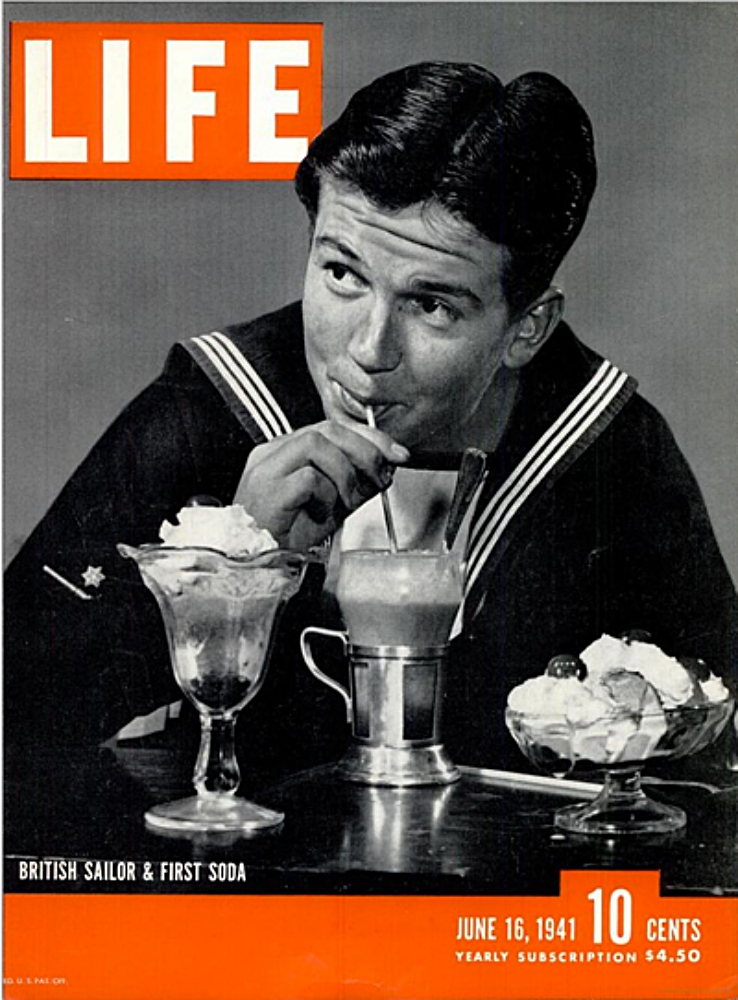Cover boy sailor
IN June 1941, Britain was at its lowest wartime ebb. Most of Europe had been overrun by German panzer armies, France had collapsed and on this isolated island nobody was quite certain whether we should treat the miraculous evacuation of British forces from Dunkirk as a defeat or victory. Just at that moment a young sailor from Worthing made a timely and unique contribution to changing the fortunes of war.

IN our hours of direst need and with the imminent threat of a German invasion of Britain, Churchill was using all his political and diplomatic skills to encourage America to support us but with little success. Their President Roosevelt may have believed otherwise but many of the American people were convinced that Britain had already virtually lost World War Two.
Then on June 16, 1941, America woke up to find the cheeky face of a young sailor from Worthing beaming at them from their newsstands. There is little doubt that positively cheerful image of 19-year-old Philip Gamester emblazoned across the front cover of the world’s most famous and prestigious picture magazine, Life, on that day altered the perceptions many Americans held of Britain’s chances of survival in the world conflict.
Overnight, Philip Gamester, a Royal Navy gunner, not only became the best-known British sailor in America but also a positive influence in persuading the largely isolationist United States that despite the worst the Nazis could throw at Britain its population was neither down or out.
At the same time it gave him a unique opportunity to experience America in a way that very few young Englishmen of the time could even dream of.
`I can hardly believe it has all happened to me,’ Philip wrote home to his parents, Mr and Mrs F E Gamester, in Castle Road, West Tarring.
He told them how one of Life’s most famous photographers, W. Eugene Smith, and a woman reporter had approached him in Baltimore and asked for his co-operation in producing a picture story on America through the eyes of a British tar.
‘They paid all my expenses and I had a wonderful time’ he wrote home.
`They drove me to Washington where they took their first picture of me standing in front of the Lincoln memorial.
‘We got back from Washington about three o’clock on the Sunday morning and they paid for me to stay the night at the Southern Hotel in Baltimore. After a good lay-in on the Sunday morning in a lovely bed I had a marvellous dinner in the hotel. Then we set off for New York, driving through four states.
`On Monday they took pictures of me doing the most crazy things. It was good fun!
`The photographer’s assistant, a Mrs Wall, showed me around New York in the afternoon in their terrific big car. Gosh, I felt like a President.
`We drove down Fifth Avenue, Park Avenue, into the Bronx, over the gigantic Triborough Bridge to the new La Guardia Airport. Then right to the end of Manhattan to look out across the harbour, where I could seen the Statue of Liberty in the distance.
`I went up in the RCA building where going up in the elevator made my ears go all funny, rising to such a height at such a terrific speed.
`We strolled down Broadway at night and it was just one sea of neon lights. They let me try everything.
`I arrived back in Baltimore on Tuesday morning, where I had to take a taxi to the docks to rejoin my ship because I was so loaded up with stuff. I got two hams weighing 15 lbs and 10 lbs of marmalade to bring home for you. I hope to bring some tea, too.’
In a three-page feature, Life magazine described Philip as a bright and likeable Sussex lad.
`He was anxious’ they reported `to see how the real America compared with the movie version. From a quick survey he thought it compared very well.
`He was heartbroken, however, to learn that film star Deanna Durbin was married while he was crossing the ocean…..
`After the war is over he would like to get an audition on the `Major Bowes’ programme and maybe proceed from there to a job in the Metropolitan Opera.’
Here are extracts from captions under some of the pictures Life published.
`American girls tickled Philip. Every time a pretty girl passed he leaned out of the car window and looked eagerly after her.’
`After gobbling a hot dog he asked for a hamburger, examined it closely and asked where the ham was.’
`American automobiles made Philip gasp with admiration. He fingered the shiny bumpers and got underneath to see the workings.’
Philip arrived safely back in England soon afterwards – but what happened then? His American adventures were reported in the Worthing Gazette but it is not known if Philip survived the war or ever found his way back to America to follow up that ambition he expressed to Life magazine.